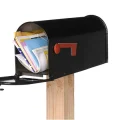Have you joined the ranks of marketers benefitting from personalized URLs? If not, why not? Personalized URLs are a highly effective way to increase response rates and gather more information about your customers.
Personalized URL campaigns use the ability of digital presses to create personalized URLs that send recipients to their own, fully personalized pages (www.bobsbuildings.com/john_smith.htm). There, recipients generally navigate a customized “mini-site” that includes a personalized landing page, a survey page, an information page, and a thank-you page. Once the user responds, the data is appended back into your database for use in future targeting.
Although this sounds complicated, it isn’t. These applications can be template-driven, using something as simple as a mailing list. Setup time can be a matter of hours—or less. The magic is in the software.
While personalized URLs do require databases, they can be successful with as little as a mailing list. Campaigns often start with some kind of basic demographic or other segmentation, and once people respond, the software gathers the data and appends it back automatically so you can use it for more detailed targeting and personalization later. Thus, personalized URLs don’t require detailed marketing databases. They become gateways to creating them.
Indeed, research shows that the more marketers learn from their personalized URL surveys, the more effective their campaigns become. In an analysis of its customers’ multi-channel marketing campaigns, for example, one personalized URL software supplier found that in 2009, marketers using its system achieved a 5.1% visit rate and 3.8% response rate on average. But in 2010, just one year later, they were achieving visit rates of 6.5% and response rates of 4.5%.
Personalized URLs are a terrific tool for generating responses and learning about your customers . . . and the more you use them (and learn from them), the more effective they become.



